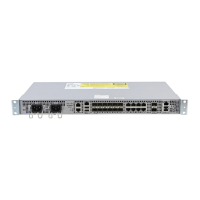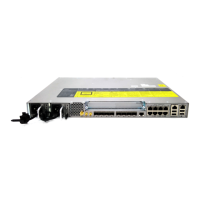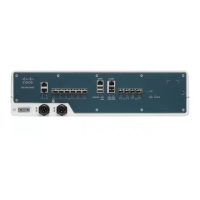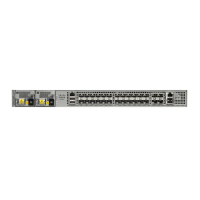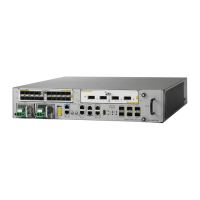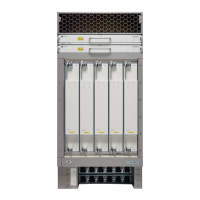•
If one or more ports in a segment is not operational, and cause a link failure, all ports forward traffic on
all VLANs to ensure connectivity.
•
In case of a link failure, alternate ports are unblocked as quickly as possible. When the failed link is up,
a logically blocked port per VLAN is selected with minimal disruption to the network.
You can construct almost any type of network based on REP segments. REP also supports VLAN load
balancing, which is controlled by the primary edge port but can occurring at any port in the segment.
Link Integrity
REP does not use an end-to-end polling mechanism between edge ports to verify link integrity. It implements
local link failure detection. When enabled on an interface, the REP Link Status Layer (LSL) detects its
REP-aware neighbor and establishes connectivity within the segment. All VLANs are blocked on an interface
until the REP LSL detects the neighbor. After the neighbor is identified, REP determines which neighbor port
should become the alternate port and which ports should forward traffic.
Each port in a segment has a unique port ID. The port ID format is similar to that used by the spanning tree
algorithm: a port number (unique on the bridge), associated to a MAC address (unique in the network). When
a segment port is up, LSL sends packets that include the segment ID and the port ID. The port is declared as
operational after it performs a three-way handshake with a neighbor in the same segment. A segment port
does not become operational under the following conditions:
•
No neighbor has the same segment ID.
•
More than one neighbor has the same segment ID.
•
The neighbor does not acknowledge the local port as a peer.
Each port creates an adjacency with its immediate neighbor. Once the neighbor adjacencies are created, the
ports negotiate to determine one blocked port for the segment, which is the alternate port. All other ports
become unblocked. By default, REP packets are sent to a PortFast Bridge Protocol Data Unit (BPDU) class
MAC address. The packets can also be sent to the Cisco multicast address, which at present is used only to
send blocked port advertisement (BPA) messages when there is a failure in the segment. The packets are
dropped by devices not running REP.
Fast Convergence
Because REP runs on a physical-link basis and not on a per-VLAN basis, only one hello message is required
for all VLANs, thus reducing the load on the protocol. We recommend that you create VLANs consistently
on all switches in a given segment and configure VLANs on REP trunk ports. To avoid the delay introduced
by relaying messages in software, REP also allows some packets to be flooded to a regular multicast address.
These messages operate at the hardware flood layer (HFL) and are flooded to the whole network, not just the
REP segment. Switches that do not belong to the segment treat the messages as data traffic. You can control
flooding of these messages by configuring a dedicated administrative VLAN for the whole domain.
The estimated convergence recovery time is less than 200 milliseconds (ms) for the local segment.
LAN Switching Configuration Guide Cisco IOS XE Everest 16.5.1 (Cisco ASR 900 Series)
12
Configuring Resilient Ethernet Protocol
Link Integrity

